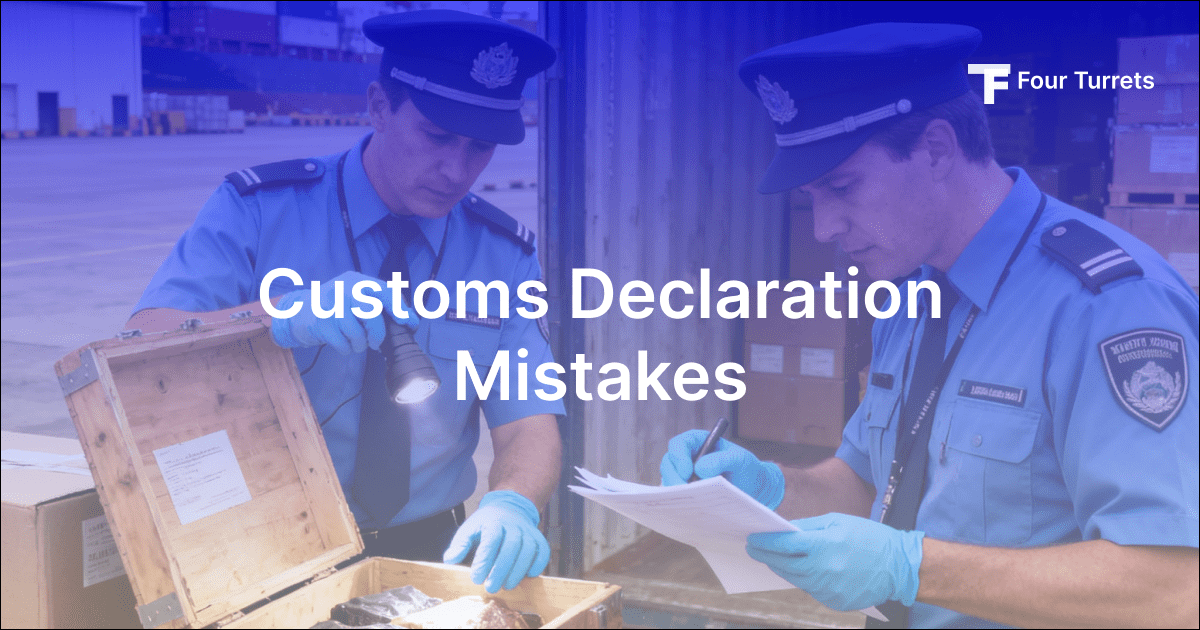Common Customs Declaration Mistakes & How to Avoid Them
When engaging in global trade, custom clearance is a critical step that can either smoothen your shipment process or cause costly delays and fines across borders. For small manufacturers and exporters, especially those new to global markets, navigating the complexities of customs declarations can be daunting. Errors in the custom declaration form or related export documents can lead to penalties, shipment hold-ups, or even seizure of goods.
This blog will highlight the most common customs declaration mistakes and provide practical tips on how to avoid them, ensuring your international shipping experience is hassle-free.
Common Customs Declaration Mistakes
Here are some common customs declaration mistakes that freight forwarder or businesses make while importing and exporting goods in their supply chain systems.
Incorrect or Incomplete Information on the Declaration Form
Providing inaccurate details such as wrong product descriptions, incorrect quantities, or missing information can trigger customs inspections or fines. Customs authorities rely heavily on the accuracy of the declaration form to assess duties and compliance. Incorrect value of the goods, incorrect description of the items or country of origin are some of the most common issues that needs to be avoided.
Misclassification of Goods
Every product has a specific tariff code under the Harmonized System (HS). Misclassifying goods can lead to incorrect custom duties being applied, resulting in fines or delays. Proper classification is essential for smooth customs clearance. Description of the goods and value of your goods have to be free of errors or omissions. This would help you avoid paying any access charges.
Inaccurate Invoice Details
The commercial invoice must match the customs declaration exactly. Discrepancies in price, currency, or product description can raise red flags and cause shipment delays. To avoid mistakes in documentation process, you can work with expert custom agents and solve the potential problems in the initial time period.
Failure to Provide Complete Export Documents
Missing or incomplete export documents such as certificates of origin, licenses, or permits can halt the consignment at customs. Importers and exporters should know the consequences of inaccurate filing and needs of documentation on both the ends. When you fail to comply with governments, even the free trade agreements would not come to your help.
Underestimating Tariffs and Taxes
Not accounting for applicable tariffs or taxes can lead to unexpected costs and fines. Importing parties should be aware of the tariff rates applicable to their goods. Detailed and accurate filing would help you to stay away from unwanted tax collections and issues with the local bodies.
Ignoring Country-Specific Import Regulations
Different countries have unique import restrictions and documentation requirements. Overlooking these can cause shipments to be rejected or delayed. This is one of the most common mistakes importers make, to avoid penalties, know what countries is treated with what rules and tariff structures before importing goods.
Not Using a Reliable Forwarder or Customs Broker
Attempting to handle customs clearance without professional help can increase the risk of documentation errors. Experienced forwarders understand the nuances of international shipping and customs procedures.
How to Avoid These Mistakes
- Double-Check All Information: Ensure all details on the customs declaration form and invoices are accurate and consistent.
- Use Correct HS Codes: Consult official tariff databases or experts to classify your goods correctly.
- Prepare Complete Export Documents: Gather all necessary certificates, licenses, and permits before shipment.
- Understand Importing Country Rules: Research or consult experts on the destination country’s customs regulations.
- Work with Experienced Export Agents and Forwarders: Professionals can guide you through the process, reducing errors and delays.
- Keep Up-to-Date with International Trade Regulations: Customs rules can change; staying informed helps avoid surprises.
- Maintain Clear Communication with Buyers and Customs Authorities: Transparency helps resolve issues quickly.
Why Proper Customs Declaration Matters
Errors in customs declarations can lead to:
- Delays in goods clearance, affecting delivery timelines.
- Fines and penalties imposed by customs authorities.
- Increased costs due to storage fees or re-exporting goods.
- Damage to business reputation with international buyers.
- Legal complications in severe cases.
By avoiding another common mistakes, exporters can ensure smoother international shipping and better customer satisfaction.
What is a customs declaration form?
A customs declaration form is a document submitted to customs authorities detailing the contents, value, and classification of goods being imported or exported. It is essential for calculating duties and ensuring compliance.
How can I find the correct HS code for my product?
HS codes can be found through government tariff websites or by consulting with customs brokers or export agents who specialize in classification.
What happens if I provide incorrect information on customs documents?
Incorrect information can lead to shipment delays, fines, or seizure of goods. It may also damage your credibility with customs authorities.
Can I handle customs clearance myself?
While possible, it is often complex and risky. Using experienced export agents or customs brokers can save time and prevent costly mistakes.
While possible, it is often complex and risky. Using experienced export agents or customs brokers can save time and prevent costly mistakes.
Common documents include the commercial invoice, packing list, export license (if applicable), certificate of origin, and the customs declaration form.


